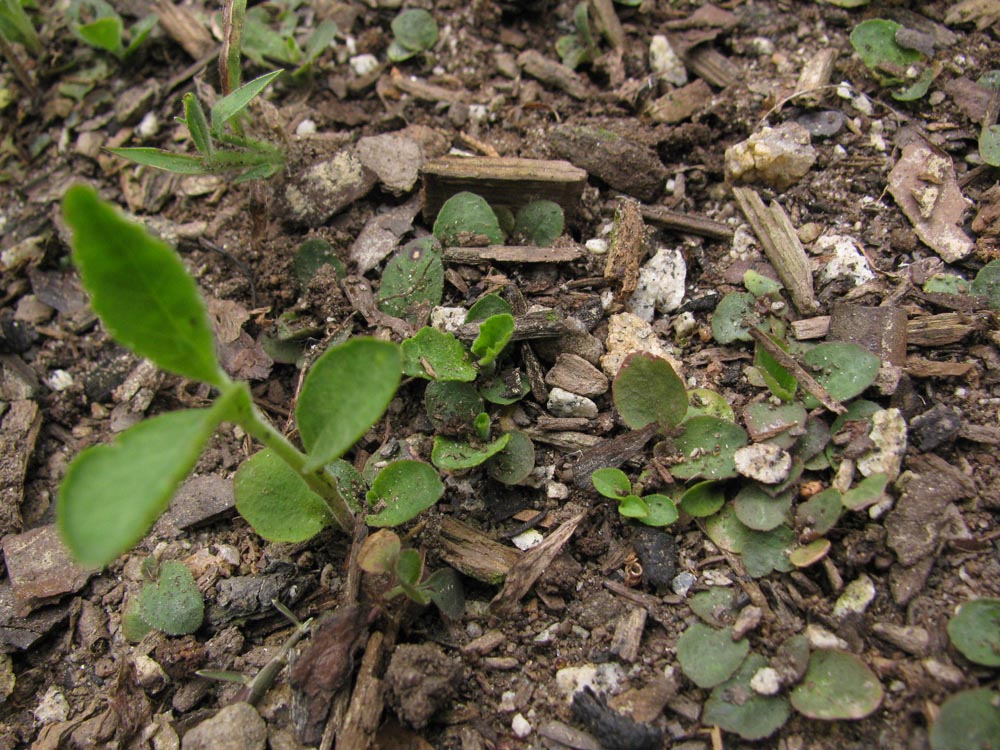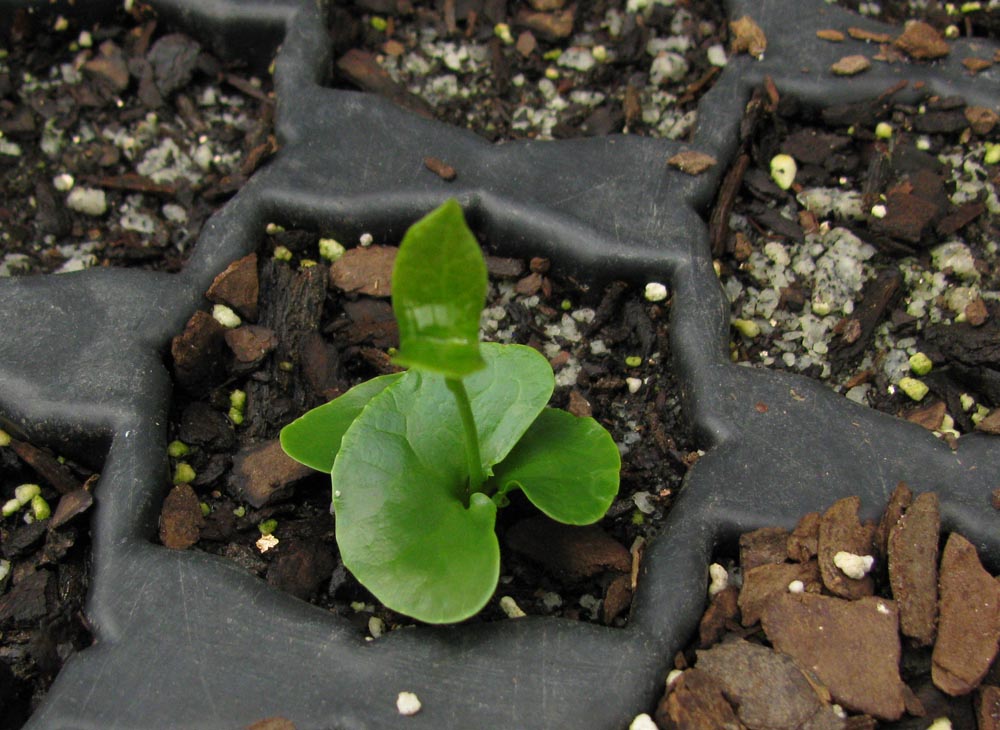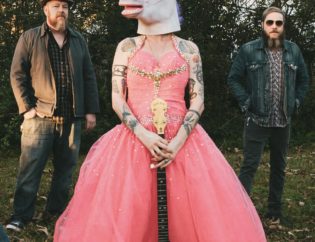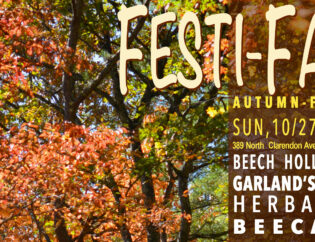This is the first year we’ve been able to sow seeds in our outdoor propagation beds, and it’s all starting to come together.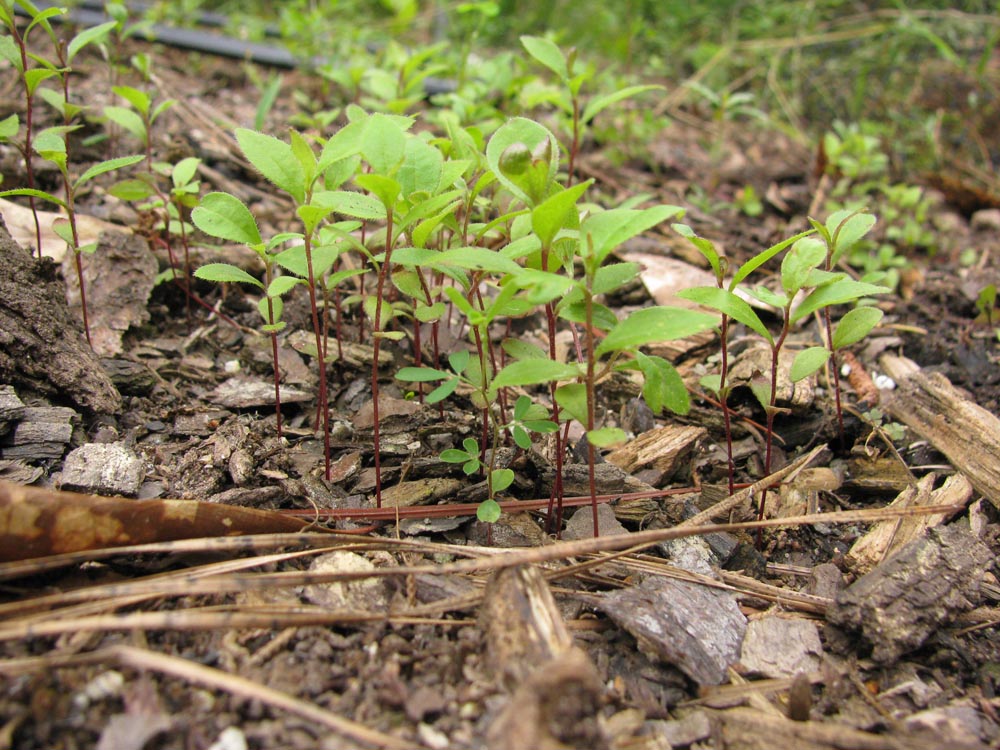
Cornel Aster (Doellingeria infirma) seedlings sprouting their red stems.
I started planting seeds back in March and then was slightly worried a month later when nothing had sprouted. 
I hastily put together a bunch of trays for the greenhouse because I thought the ants had stolen all those precious seeds. The average last frost date for our area is April 10th, and although I forgot it, the plants sure know it. We even had an extra few weeks of cold, wet weather this year, but as you’ve noticed, it got downright hot in the past few weeks. The seeds noticed. They pretty much all sprouted in unison right after the cold and wet stopped. We’re still waiting on a few stragglers, but most of the species we planted (some seeds were from 2011!) have germinated and are almost big enough to be scooped up into trays.
Bowman’s Root (Gillenia stipulata) in a clump. I planted a quincunx (“5” on a die) pattern of clustered seeds in each bed in the hope that I could just scoop up clumps and make one tray at a time.
The Downy Blue Lobelia (Lobelia puberula) seeds (and all Lobelia seeds) are like dust so they didn’t lend themselves to a pattern per se. They start off SO small. All the plants here, except for that pesky grass in the background, are Lobelia puberula of slightly different ages.
One of many species called “Brown-Eyed Susan,” Rudbeckia triloba, note the tri-loba.
Blue Star (Amsonia tabernaemontane) are some of the faster growing seedlings this year.
Check out the cotyledons on this Sweetshrub (Calycanthus floridus). I planted all the Sweetshrub seeds in trays because they are very large and I thought squirrels, mice, etc. might take off with them.
Apparently those large seeds house all the energy for these massive seed leaves. It reminds me of Bloodroot the way the leaves are almost wrapped around the stem.
And finally, speaking of seed leaves, here’s some River Oats (Chasmanthium latifolium). They are Monocots (short for monocotyledon), meaning they only sprout one leaf from their seeds at first. The Sweetshrub above is a great example of a Dicot (dicotyledon) with two seed leaves sprouting in unison. The subsequent, or “true,” leaves on the plant often differ from their seed leaf predecessors. Growing from seed encourages genetic diversity, so it’s something we like to do whenever possible. It can be as simple as scratching the ground and partially burying spent flower heads, or as complex as saving, cleaning, drying and cold stratifying seeds in the fridge and then sowing them in trays full of soil.
These seedlings should be large enough to sell in a the fall (except the Sweetshrub, might be 2014 before that one gets tall enough), which is also the perfect time to plant them. In the meantime, we have plenty of their parents/cousins/siblings that would love to brighten up your yard.

